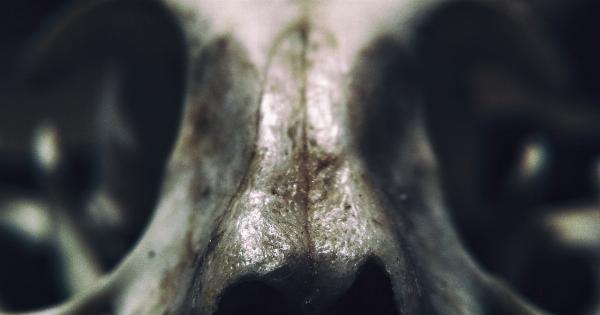Sleep paralysis is a phenomenon that affects many individuals while they are falling asleep or waking up. During sleep paralysis, the body is temporarily immobilized, causing a person to be unable to move or speak.
This condition can be accompanied by terrifying hallucinations and a feeling of pressure on the chest, leading to significant distress and fear. In this article, we will explore sleep paralysis in depth, discussing its causes, symptoms, and treatment options, as well as shedding light on the body’s response during this fascinating phenomenon.
Understanding Sleep Paralysis
Sleep paralysis is classified as a sleep disorder that affects the body’s transition between sleep stages.
Typically, during rapid eye movement (REM) sleep, when dreaming occurs, the brain sends signals to inhibit muscle movement, preventing us from physically acting out our dreams. However, in individuals with sleep paralysis, this inhibition of muscle movement continues even after waking up or before fully falling asleep, leading to a state of temporary paralysis.
Causes of Sleep Paralysis
While the exact causes of sleep paralysis are not yet fully understood, several factors can contribute to its occurrence.
Sleep deprivation, irregular sleep patterns, and sleep disorders such as narcolepsy have been identified as potential triggers for sleep paralysis. Additionally, high levels of stress and anxiety, as well as certain medications, can increase the likelihood of experiencing this phenomenon. Sleep paralysis is also thought to have a genetic component, as it often runs in families.
Symptoms of Sleep Paralysis
The main symptom of sleep paralysis is the temporary inability to move or speak. This sensation can last for a few seconds to a few minutes.
Some individuals also experience hallucinations during sleep paralysis, which can be visual, auditory, or tactile in nature. These hallucinations often evoke a sense of fear and paranoia. Furthermore, many people report a feeling of pressure on their chest during episodes of sleep paralysis, making it even more distressing.
The Body’s Response During Sleep Paralysis
To understand the body’s response during sleep paralysis, it is crucial to delve into the mechanisms that regulate muscle movement during sleep.
When we enter REM sleep, a stage characterized by intense brain activity and vivid dreams, the brain sends signals to the body’s muscles to relax and become temporarily paralyzed. This mechanism is known as REM atonia. During normal sleep, this paralysis is essential for preventing us from physically acting out our dreams.
However, in sleep paralysis, the body remains in this state of REM atonia even after waking up or before fully falling asleep.
Researchers believe that this happens because the brain awakens from a REM sleep state but the signals to inhibit muscle movement continue to be released. Consequently, individuals with sleep paralysis find themselves in a state where their mind is awake, but their body remains firmly immobilized.
Neurological Basis of Sleep Paralysis
To comprehend the neurological basis of sleep paralysis, it is essential to focus on the role of the neurotransmitter gamma-aminobutyric acid (GABA). GABA is responsible for inhibiting various activities in the brain, including muscle movement.
During REM sleep, GABAergic neurons release inhibitory signals that restrict voluntary muscle movement.
In individuals with sleep paralysis, there appears to be an imbalance in GABAergic neuron activity or an oversensitivity to these inhibitory signals.
This imbalance leads to a prolonged inhibition of muscle movement, even after waking up or before falling asleep. While further research is needed to fully elucidate the neurological basis of sleep paralysis, GABA dysregulation is considered a potential contributor.
Impact on Individuals
Sleep paralysis can have a profound effect on an individual’s well-being.
Those who experience sleep paralysis often report feeling a tremendous amount of fear and anxiety, especially due to the accompanying hallucinations that can be vivid and unsettling. Sleep paralysis episodes can lead to disturbed sleep patterns, as individuals may become apprehensive about falling asleep or may experience insomnia as a result of the distressing experiences.
Furthermore, the fear and anxiety associated with sleep paralysis can contribute to the development of other sleep disorders, such as insomnia disorder or an increased risk of nightmares.
Consequently, individuals who experience sleep paralysis may face significant repercussions in terms of their overall sleep quality and mental health.
Managing Sleep Paralysis
Although sleep paralysis can be distressing, there are several strategies individuals can utilize to manage and reduce its occurrence.
Establishing a consistent sleep schedule, ensuring an adequate amount of sleep each night, and practicing relaxation techniques before bed can help regulate sleep patterns and reduce the likelihood of experiencing sleep paralysis.
Moreover, addressing underlying sleep disorders, such as narcolepsy, may alleviate sleep paralysis symptoms.
If the episodes of sleep paralysis become frequent and severely impact an individual’s quality of life, consulting a healthcare professional, such as a sleep specialist or psychologist, is advisable. They can provide further guidance and recommend appropriate treatments, which may include cognitive-behavioral therapy or medication in certain cases.
Conclusion
Sleep paralysis is a fascinating sleep disorder that temporarily immobilizes the body during the transition between sleep states.
Although the exact causes and mechanisms behind sleep paralysis are not yet fully understood, research suggests that an imbalance in GABAergic neuron activity and an oversensitivity to inhibitory signals play a role. Sleep paralysis can have a significant impact on individuals’ well-being, leading to fear, anxiety, and disturbed sleep patterns.
However, with proper sleep hygiene practices and professional guidance, sleep paralysis can be managed effectively, allowing individuals to experience more restful sleep.




























